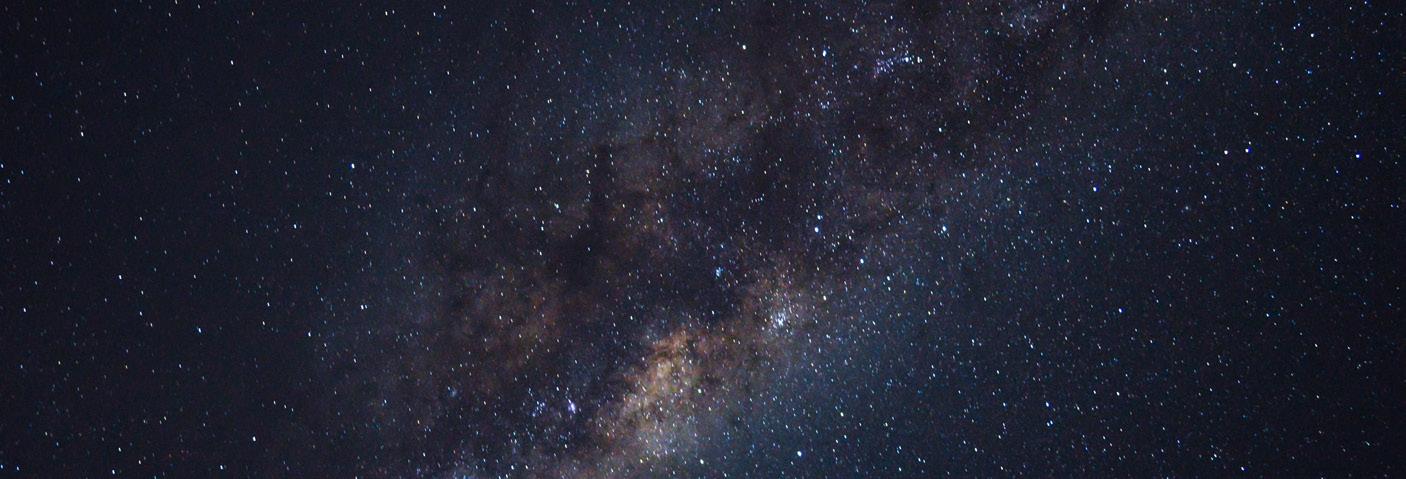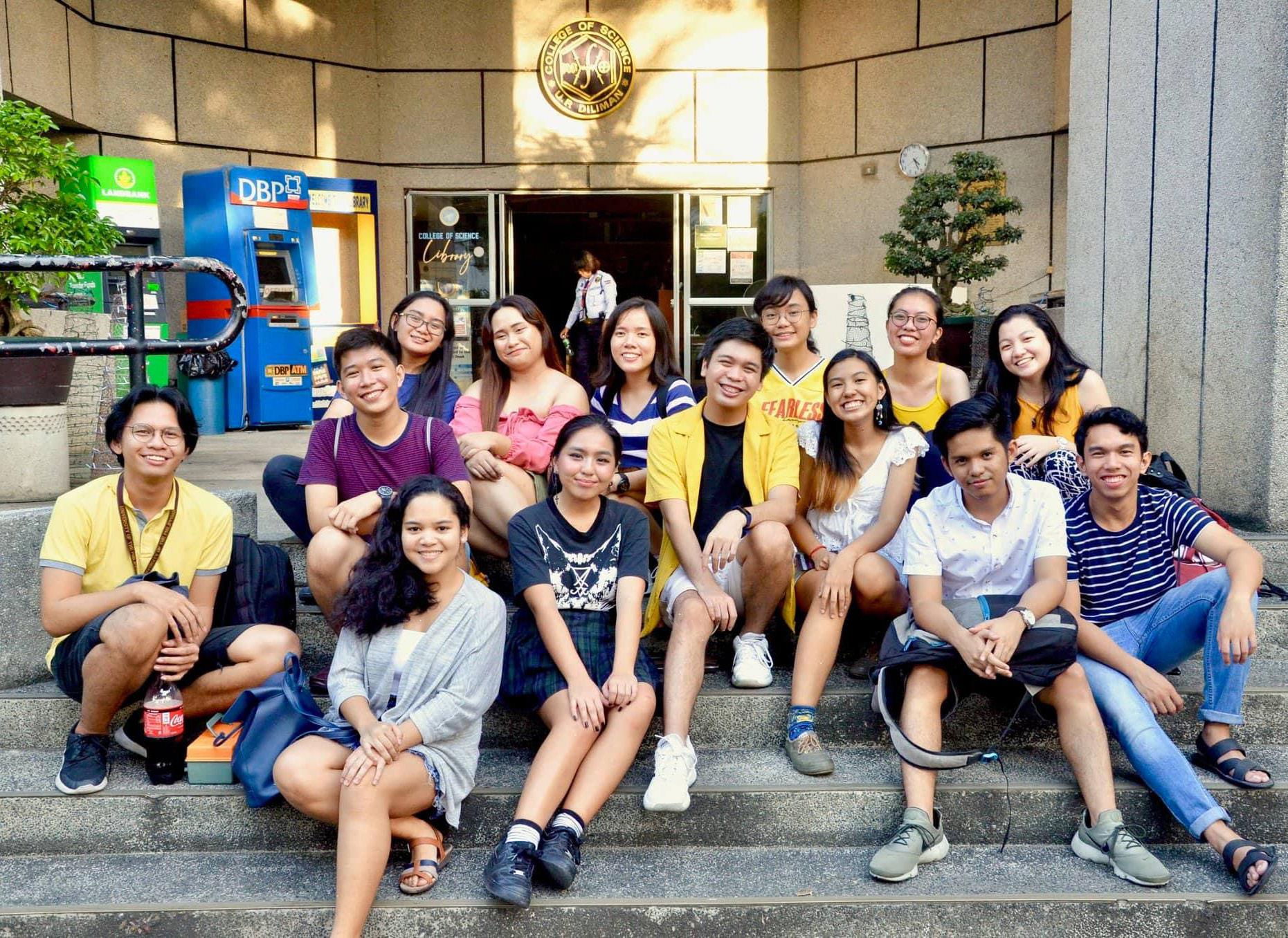
7 minute read
Means to An End
written by John Rafael Ambag
graphics by Deitro Dazo
Advertisement

0101010 1010101 1101001 1001011 1110010
THE PHILIPPINE SPACE AGE IS underway. From the early dabs with space-related activities during the 1960s until the signing of the Philippine Space Act last August, the country has come a long way from being a mere observer to an actual player in space initiatives. The law, buttressed by the recent string of successful satellite launches of Diwata-1, Maya-1, and Diwata-2, sets up the country to be “space-capable” and “spacefaring” by 2022. 1,2
In spite of the law being signed only last 2019, the Philippines is not exactly a rookie in space initiatives. In fact, one of its earliest attempts can be traced back all the way to the Spanish colonial era upon establishment of the Manila Observatory in 1865. 3 Subsequently, not much progress was made until the mid-1960s, when the government created the Philippine Communications Satellite (PhilComsat) as a means to provide the country with its own satellite system for communication and information purposes. 4
At the time of its inception, Philcomsat served as a founding member of the International Satellite System (Intelsat), an entangled conglomeration of 172 countries cooperating with each other in managing fax, cable, telephone, and TV transmissions. At the time, Philcomsat had exclusive franchise for satellite communication in Southeast Asia, Japan, and Korea. During the 1969 launch of the Apollo 11, Philcomsat’s equipment also made it possible for Asians to watch and participate with the well-anticipated moon landing.
Fast forward to 1974, PLDT created the Mabuhay Philippines Satellite Corporation (MPSC). At the time, incumbent President Fidel Ramos insisted on having a Philippine satellite in orbit, prodding MPSC to purchase Palapa B-2P from Indonesia, later renamed as Agila-1, the first satellite of the country, which was shifted to its new orbital slot on August 1996 upon acquisition. 4 After which, PH rehashed the said move, purchasing Agila-2 with assistance from China in 1997.
The Philippines’ early attempts with space initiatives are interspersed along a rocky history spanning wars with three colonizers, transitionary governments, dictatorship, and a street revolution. Meanwhile, during the same span, space projects outside the Philippines are burgeoning at a tremendous pace.
During the 1950s, when the Philippines was still licking its wounds from the previous war and the myriad human exploitations that took place, Russia already launched Sputnik 1, the first human-made object to make its rounds about our planet. The launch, which took place on the 4th of October, 1957, sparked the mythicized space race at the time. 5
And while PH was busy creating Philcomsat during the late 1960s, the US already launched three men to the moon via the Apollo 11 mission. Between the 1950s and the late 1960s, the two space giants, US and Russia, exchanged haymakers by sending satellites, humans, and even animals like dogs into space.
The country’s recent move made it only the sixth Southeast Asian country to have a space program. We’ve been lagging behind by a tremendous margin, with Indonesia’s National Institute of Aeronautics and Space (LAPAN in Indonesian) established as early as 1963. 2 Indonesia made the decision with military operations in mind, specifically creating usable rockets for its air force. 2 Meanwhile, Malaysia has ANGKASA, primarily tasked with remote sensing and earth observation. Singapore also has its own space agency in the form of the Centre for Remote Imaging, Sensing, and Processing (CRISP), housed under the National University of Singapore (NUS). It also processes retrieved satellite data. 2 Lastly, Thailand and Vietnam
fig. 1 CubeSat Maya-1


fig. 2 Diwata-1
... the establishment of a space agency is not an end goal, but only a means to an end.

wrap up the members of this pantheon of countries, with Thailand establishing the Geo-Informatics and Space Technology Development Agency (GISTDA) last 2000, while Vietnam created the Vietnam Space Technology Institute (STI) last 2006.
Despite being late to the game, the Philippines expects to reap significant benefits from the new space agency. Dr. Rogel Mari Sese, whose team conducted the groundwork necessary for establishing PhilSA, explains from a cost-benefit analysis that for every peso used for space initiatives in the country, the government can get P2.50 back. 6 He insists that doing space initiatives in the country is not a futile effort punctuated by financial losses, but instead a money-making venture for us Filipinos as the global estimate for financial returns in space initiatives stand at $4 for every $1. 7 Instead of thinking of posh western films showing off faulty rockets and nauseating space suits, one must know that space initiatives are more than that. In fact, the practice of space science provides a wide array of practical applications including saving up on foreign sourcing of satellite data.
PhilSA expects to have P10 billion for the next five years, an average of P2 billion per annum to shoulder its first operations. While the numbers may seem staggering, that amount only costs 0.067 percent of PH’s annual budget of P3.662 trillion for 2019. To add, since 2010, the country had only spent P7.4 billion on space research and development which already resulted to launching three minisatellites, and establishing a new hub for space research, UlyS3ES which stands for University Laboratory for Small Satellites and Space Engineering Systems, housed in UP Diliman. 2,8 In that same span, the country has already sent a handful of Filipino engineers and scientists to train abroad, improving the talent pool via programs such as PhilippineLIDAR (Light detection and ranging) and STAMINA4Space (Space Technology and Applications Mastery, Innovation, and Advancement). 2 In spite of a modest budget, space initiatives can lead to hefty dividends for numerous government sectors if used properly and in integrative fashion.
With PhilSA established, the country sets its sights to new horizons in the field of space science listing six key target areas for the agency to address: national security and development, hazard management and climate studies, space research and development, space industry capacity building, space education and awareness, and international cooperation. 9 Whether the said key areas are arranged according to priority is unknown, but it still reflects one common theme: the establishment of a space agency is not an end goal. As exemplified by its neighboring space agencies, PhilSA is a means to an end.
References
1 . Francicsco, Mikael. “‘Space? So What?’ 10 Practical Uses of Space Science in the Philippines.” FlipScience - Top Philippine Science News and Features for the Inquisitive Filipino. (blog), February 1, 2019. https://www.flipscience.ph/space/10-uses-space-science-philippines/.
2. Tan, Michael L. “Philippine Space Agency.” Accessed February 22, 2020. https://opinion.inquirer.net/124039/philippine-space-agency. 3BusinessMirror. “PHL Flying High–into Space.” BusinessMirror (blog), October 29, 2018. https://businessmirror.com.ph/2018/10/29/ phl-flying-high-into-space/.
4. Manila Standard. “Businessman Urged Gov’t to Set up Satellite,” December 7, 1993. https://news.google.com/newspapers?id=SZUVAAAAIBAJ&sjid=3woEAAAAIBAJ&pg=2567%2C1675404.
5. Austalian Geographic. “Timeline of Space Exploration.” Australian Geographic, August 27, 2012. https://www.australiangeographic. com.au/topics/science-environment/2012/08/timeline-of-space-exploration/.
6. Francisco, Mikael. “Why the Philippines Needs a National Space Agency.” GMA News Online, October 9, 2016. https://www.gmanetwork.com/news/story/584375/scitech/science/why-the-philippinesneeds-a-national-space-agency/.
7. Kyodo. “Philippines Breaks New Ground with Own Space Agency.” The Japan Times Online, August 17, 2019. https://www.japantimes.co.jp/news/2019/08/17/asia-pacific/science-health-asia-pacific/ philippines-space-agency/.
8. Gonzales, Gelo. “DOST Appeals for Space Agency Bill Approval before Congress Adjourns.” Rappler. Accessed December 19, 2019. http://www.rappler.com/technology/news/222381-dost-appealspassing-space-agency-bill.
9. Ronnicque, Neyzielle. “Philippine Space Agency Signed into Law.” DOST-ASTI (blog), August 15, 2019. https://asti.dost.gov.ph/ communications/news-articles/philippine-space-agency-signedinto-law/.

join scientia!


Scientia is looking for writers, layout artists, illustrators, and administrative staff. No prior experience necessary — we’ll teach you along the way!
Interested? Sign up now: bit.ly/JoinScientia2020
VOL. 26 NO. 2 THE NURTURE ISSUE MAR 2020

cover art by sam julian ed. cartoon by mc perez comics by jansen wong Natalie Galibut editor-in-chief C.J. Palpal-latoc associate editor Audrey Dela Vega Bienvenido Castro Jazryl Galarosa Lem Nathan Ereña campus Bianca Bat-og Jerrieme Maderazo Kyla Javier Sam Peniano culture Alyanna Lontok Emma Oliveros Jenver Laragan Nyrene Paranga Rio Constantino science Adrian Bayle Christia Tangin Deitro Dazo Hanz Salvacion Jansen Wong MC Perez Reign Bañares Sam Julian design Alab Ayroso online editor
Aces San Pedro Fort David Janina Alviar Myxie Rogado Xian Guevarra administrative Tiffany Ashley Uy design editor Nikka Macasa campus editor Justin Hapa culture editor John Rafael Ambag science editor
ERRATUM for Scientia Vol 26 No. 1: Agham Youth is not the current lead coordinator of 350.org. We apologize for this oversight.
@upscientia @upscientia
upscientia@protonmail.com
medium.com/up-scientia Scientia
Scientia is the official student publication of the College of Science, UP Diliman, formed in 1988.
Affiliations: UP SOLIDARIDAD, College Editors Guild of the Philippines, Science and Technology Editors League of the Philippines










